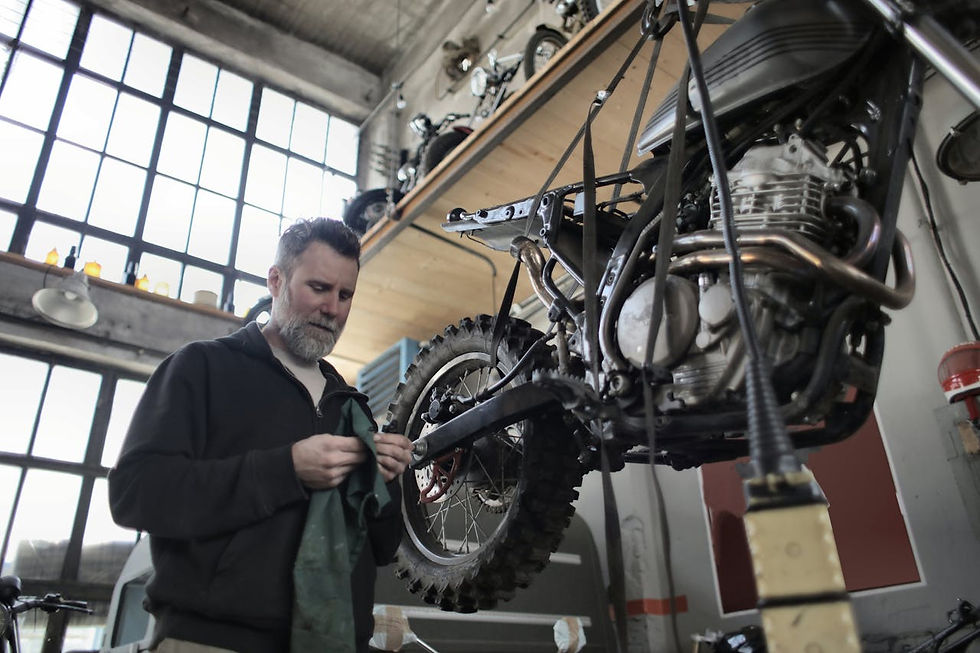Why Do Motorcycle Rear Tyres Get More Punctures Than the Front?
- Animesh Roy
- Aug 25
- 2 min read
Updated: Sep 12

If you’ve been riding motorcycles for a while, you might have noticed a strange pattern: whenever there’s a puncture, it’s almost always the rear tyre. Many riders joke that the front tyre is just there for steering while the rear takes all the bad luck! But is this really true, and if so, why does it happen?
Let’s break down the reasons in simple, rider-friendly language and see why your back wheel seems to attract every nail and screw on the road.
The Rear Tyre Runs Right Into Trouble
Think about how a motorcycle rolls over debris. The front tyre hits an object first, like a nail or sharp stone, and often knocks it around. By the time the rear tyre reaches the same spot, that object is already standing upright or lying in the perfect position to pierce rubber. In other words, the front tyre sets the trap, and the rear tyre steps right into it.
More Weight on the Rear Tyre
Motorcycles carry more weight on the rear wheel thanks to the engine placement, rider position, and even luggage or a pillion rider. More weight means more pressure on the tyre’s contact patch, which makes it easier for sharp objects to push through. It’s like pressing a thumbtack on a table: add pressure, and it goes in much faster.
Rear Tyre Does More Work
The rear wheel handles acceleration and, in most cases, a large part of the bike’s load. Every time you twist the throttle, the rear tyre digs into the road surface to push the bike forward. This extra strain can make the tyre softer and hotter, increasing its vulnerability to punctures especially during long rides or high-speed touring.
Front Tyre Deflects, Rear Tyre Collects
Another factor is tyre behavior. The front tyre usually rolls over objects and pushes them aside because of its lighter load and narrower profile. The rear tyre, being wider and carrying more weight, doesn’t deflect debris as easily. Instead, it crushes whatever’s left in its path sometimes straight into its own tread.
So, How Can You Avoid Rear Tyre Punctures?
Maintain proper tyre pressure: Underinflated tyres are more likely to get punctures.
Choose puncture-resistant tyres or tubeless setups: These can seal small holes on their own.
Stay alert on bad roads: Avoid riding directly over loose screws, nails, or broken glass if you can spot them in time.
Use tyre sealants for extra protection: They can prevent air loss from minor punctures.
Final Thoughts
It’s not your imagination motorcycle rear tyres really do get more punctures than the front. The reasons are simple: more weight, more load, and bad luck caused by the front tyre setting up debris perfectly for the rear.
Understanding this helps you stay prepared. Keep an eye on your tyre condition, carry a puncture repair kit on long trips, and maintain proper air pressure. After all, a flat rear tyre can ruin an otherwise perfect ride but a little care can go a long way in keeping you rolling smoothly.


